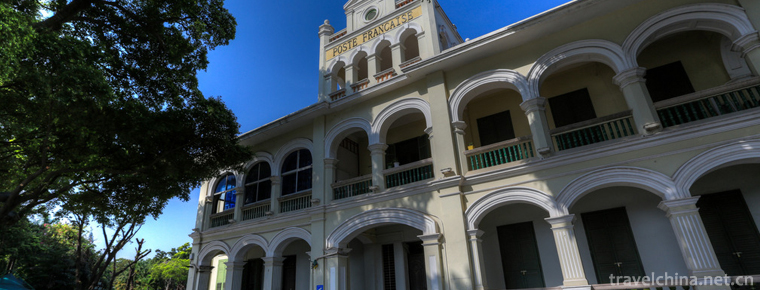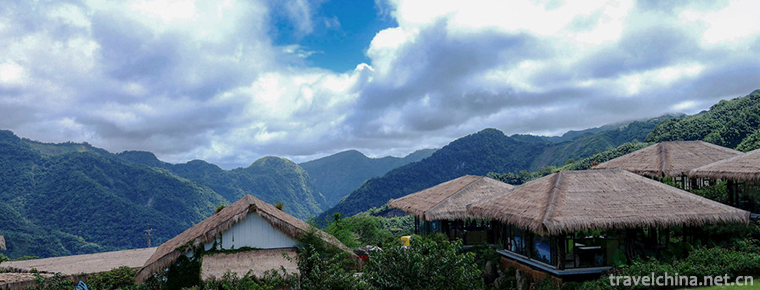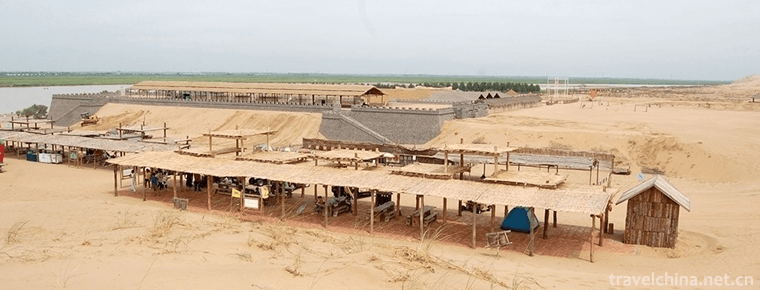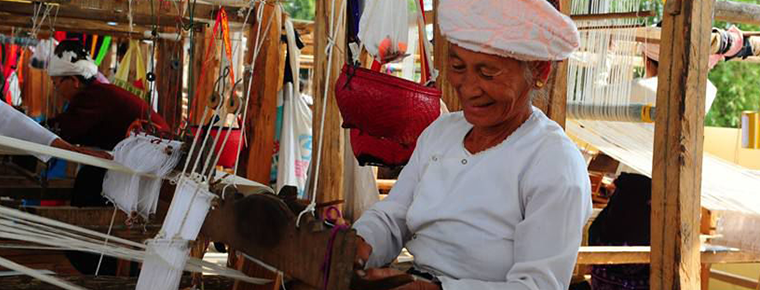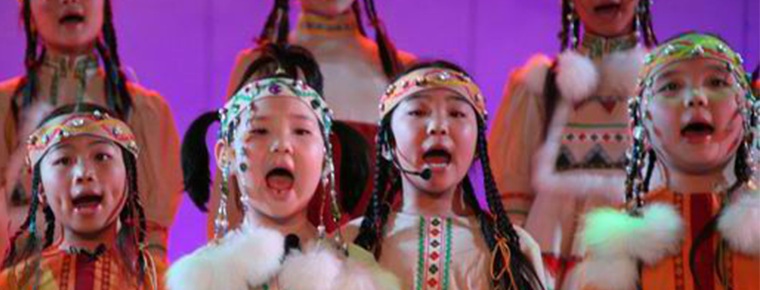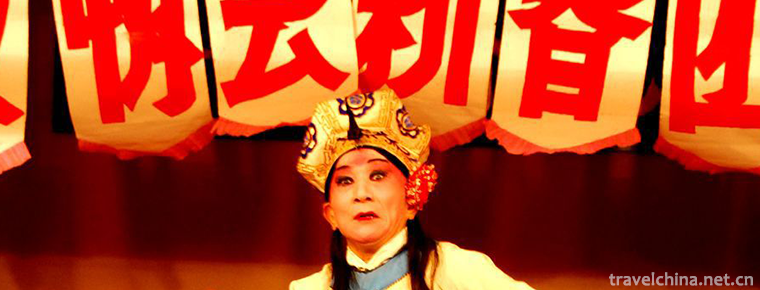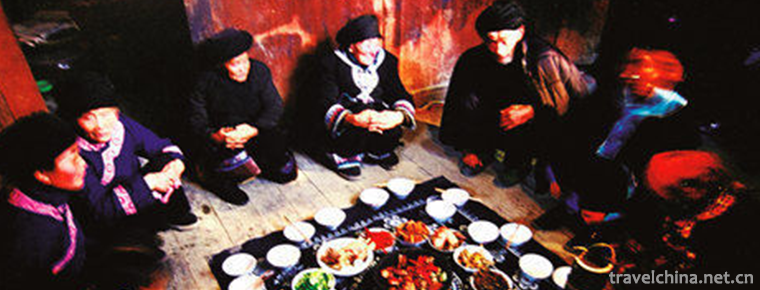Guangxi Science and Technology Museum
Guangxi Science and Technology Museum
Guangxi Science and Technology Museum is located in Nanning National Avenue. It was established in March 2006 and started construction in December. It covers an area of 14655 square meters, with a total construction area of 38988 square meters and a total investment of about 250 million yuan. The Guangxi Science and Technology Museum with the theme of "Exploring Scientific and Technological Innovation" is of great significance for improving the public's scientific and cultural quality, promoting social and economic development and scientific and technological progress. As a modern science popularization venue and Youth Science and technology activity center, it has become the leader of Guangxi science popularization education and the window to show Guangxi. It has also become an important platform for China and ASEAN countries to carry out science and technology exchanges, science popularization activities and Youth Science and technology education.
Brief introduction of mechanism
Guangxi Science and Technology Museum is a major gift project for the 50th anniversary of the founding of Guangxi Zhuang Autonomous Region. It was established on March 3, 2006, started construction on December 28, 2006 and opened in December 2008. It covers an area of 14655 m2 and a total building area of 38988 m2, with a total investment of about 250 million yuan.
The theme of Guangxi Science and Technology Museum is "Exploration, Science and Technology, Innovation". It has appropriate scale, complete functions, distinct theme, high technology content and high audience participation. The venue has permanent science popularization exhibition hall, temporary exhibition hall, Youth Science studio, high-tech cinema, academic exchange and other main functions.
Guangxi Science and Technology Museum is located at 20 Nanning National Avenue, the political, economic and cultural center of the autonomous region, adjacent to the National Square, Guangxi People's Hall, Guangxi Museum and other important public facilities, with convenient transportation.
At the end of December 2009, the Guangxi Science and Technology Museum was awarded the title of National 4A Tourism Scenic Spot after being appraised by the National Tourism Scenic Spot Quality Grade Assessment Committee.
Design Introduction
According to the design scheme, the whole architectural design of Guangxi Science and Technology Museum is integrated into the essence of Guangxi local ethnic and cultural. For example, in the region, its god resembles the elephant trunk mountain in Guilin, the moon mountain in Yangshuo, and the Pearl shellfish and clams in Beihai. In terms of nationality, the design of its main composition adopts the most distinctive and representative plumage pattern of Guangxi bronze drum and national costume, making the building like a giant wing when flying, with national characteristics and appeal.
In terms of scientific connotation, the sphere design of the dome hall is like an egg to be produced in the mother of the phoenix, or a pearl oyster to give birth to a new life. It implies the meaning of "science nurtures the future" and "pearl nurtures people". Especially in the rolling state of the sphere design, it makes the whole design dynamic and static, and full of spirituality. As the new science and Technology Museum is built on the axis of the National Avenue, it will match the people's Hall of Guangxi on the National Square and become another landmark building in Guangxi.
In the design, the Science and Technology Museum will have five permanent exhibition areas: Guangxi-ASEAN exhibition area, exploration exhibition area, life and Health Exhibition area, environment and energy exhibition area, information and future exhibition area. In the exhibition hall, more than 80% of the exhibits can be participated and demonstrated by the audience. In the children's exhibition area, more than 95% of the exhibits can be participated in.
Free open
According to the introduction of Yangtze River flood of Guangxi Science and Technology Museum, the scope of free opening of Guangxi Science and Technology Museum to all the public includes: permanent science popularization exhibition hall and exhibits; temporary exhibition hall and public science popularization exhibition. No more tickets are required for the public to enter the Science and Technology Museum. In addition, the services of visiting, explaining and depositing are free of charge.
Guangxi Science and Technology Museum has permanent science popularization exhibition hall, temporary exhibition hall, high-tech cinema, Youth Science studio, science and technology training, academic exchanges and other major functional areas. On December 5, 2008, after the opening of the Guangxi Science and Technology Museum (the new Museum), the permanent science popularization exhibition hall will be open free to the elderly, disabled persons, active servicemen and other special groups over the age of 70, and to minors from January 23, 2012.
In addition, the Guangxi Science and Technology Museum has also launched a number of free measures, such as National Science and Technology Activities Week, National Science Popularization Day and other public days, as well as free visits by public welfare organizations.
Since May 16, the Guangxi Science and Technology Museum has implemented a system of "free tickets, group booking" for the public, that is, free and orderly visits by individual visitors with valid certificates; group visits must be booked and registered with the Science and Technology Museum two working days in advance.
By the end of 2014, the science and technology venues in Guangxi had received more than 632 million spectators. Among them, the permanent science popularization exhibition hall receives about 2.83 million visitors (about 1.61 million free visitors), holds more than 170 temporary exhibitions, and receives nearly 2.73 million free visitors.
At the same time, the four-storey exhibition hall of the Guangxi Science and Technology Museum, which has been carefully planned, renovated and renovated, is launched. The new exhibition hall includes the "Power Science Popularization Exhibition Area" and the "Start-Up World" exhibition area, bringing together exhibits showing the cutting edge of high technology, and enriching the exhibits content of the Guangxi Science and Technology Museum. Up to now, the number of exhibits in the permanent science popularization exhibition hall is about 450, and the comprehensive service capacity of the venues has been greatly improved.
Technology experience
On the first floor
The head sculptures of famous Chinese and foreign scientists such as Zhang Heng, Li Shizhen, Darwin and Madame Curie have been placed on both sides of the gate. After the installation of the escalator across the floor, beside the ticket machine, a 24-meter-high theme mural is colorful. With the image of compass, Shenzhou spacecraft and other patterns, it shows the brilliant development process of Chinese science from ancient to modern. Walking into the second floor, a silver-white robot stands at the elevator entrance, ready to "talk" with tourists. As long as visitors choose the prompt questions from the computer monitor, the greeting robot can answer them like a stream and show the magical charm of technological progress. Around the entrance, the interesting and interesting interactive experience area comes into view.
The "pull yourself" in the mechanics charm zone is like a swing. When the experiencer sits on it and pulls the rope hanging in front of his eyes, he can hang himself up. In the "10 sets of mechanical transmission", as the experiencer rotates the steering wheel, clowns, cartoon dogs and ducks connected by mechanical transmission devices such as gears and connecting rods automatically stretch their necks, arms and thighs like radio exercises. A very interesting "needle curtain" is like a photographic "needle wall" consisting of dense slender metal rods. As long as you dare to bury your hands, feet and even face in them for a while, these body parts will emerge vividly from the needle curtain. In the acoustics exhibition area, the two Experiencers can whisper when they stand back to back on the "airborne rumor" platform, which is tens of meters apart.
The most challenging is the "electromagnetic stage" in the electrical exhibition area. If you dare to drill into a high-voltage discharge "cage", you can see powerful sparks splashing around with your own eyes, and the staff will encourage you to feel boldly. Of course, you are undamaged. It is said that the "cage" which tests the courage of the experiencer is a popular project in the major science and technology museums throughout the country, and it has a long history.
The "invisible man" in the optical exhibition area is probably the most magical exhibit of science and technology. The experiencer stands behind the wall panels inlaid with two mirrors, all hands and feet "disappear" at once, leaving only a pair of heads. It is amazing to see this "trick".
I've only heard that round wheels can run before, but the square wheels in the Science and Technology Museum have opened people's eyes. The vehicle makes use of the principle of "catenary surface" and "surface" and "road surface", so that the square wheel vehicle can also run smoothly on rough road surface.
Second floor exhibition area
A children's paradise has yet to be set up. In castles, forests and other magnificent forms of paradise, children can use water as strings, with the "water string instrument" to play beautiful music; can be a "small electrician", conducting electricity with the palm to help open the curtain of the cartoon room; can be loud with the pool of "shouting spring carp" to greet, the louder the shout, the more spring water out of the mouth of the fish...
The most striking spherical building in the new hall is actually the spherical screen cinema and the 4D cinema. It has the dual functions of both astronomical programs and spherical screen movies. It integrates advanced technologies such as stereo images, environmental water spraying and blowing smoke screens into one, bringing a new visual shock to the audience.
For children, besides being able to spend time exploring addiction in the beautiful permanent exhibition hall, the Youth Science studio on the sixth floor of the new museum is also a fun place. The room will be divided into robots, astronomy, parent-child scientific experience, personality printing and dyeing, scientific inquiry and so on. Robot performances, scientific theatres, astronomical lectures, personality production and other lively and exciting scientific experience activities will be carried out.
New Science and Technology Museum is mainly composed of permanent science popularization exhibition hall, temporary exhibition hall, Youth Science studio, high-tech cinema, science and technology training classroom, academic conference hall and so on. The second, third and fourth floors of the museum are permanent exhibition halls with an area of about 9000 square meters. There are more than 200 exhibits (sets), including seven themes: children's paradise, scientific exploration, environmental survival, life and health, information world, challenges and innovation, and future prospects. The exhibition area uses a lot of sound, light and electricity technology. The exhibits exhibits are highly participatory and interesting. They make the audience enjoy the infinite pleasure of scientific inquiry and enjoy learning scientific principles and knowledge. As a high-level, high-grade popular science venue. Here, through hands-on experience, children can turn abstract knowledge in textbooks into concrete, so that they develop good habits of disciplines, love science, use science, and at the same time make them have innovative consciousness. When children enjoy the joy of science from these incredible technology games, the seeds of technological innovation are quietly sprouting and growing in their young hearts!
Museum emblem
The overall shape of the emblem of Guangxi Science and Technology Museum is transformed from the capital letter "G" (the initials of the "Guang" phonetic alphabet in the name of Guangxi Science and Technology Museum), which is similar to the shape of Guangxi Science and Technology Museum. The central circular pattern is like a ball curtain cinema embedded in the pearl shape on the east side of the museum, which implies the pursuit of harmonious, united and aggressive venue culture of the Science and Technology Museum. Small Star means "Science and Technology Star" implies that the Science and Technology Museum pursues unremittingly the popularization of scientific knowledge, stimulates scientific interest, enlightens and explores the ideal and mission of innovation; the circular arc around the circular pattern implies the infinite vast development space and a bright future of the modern Science and Technology Museum.
The whole "G" shape pattern takes blue as the main color, and can also be changed according to the background color. It is supported by the five lines of "Guangxi Science and Technology Museum". It symbolizes calmness, accessibility, wisdom, openness and eternity. It also implies the human spirit of diligent exploration of science.
Museum stone
The Guangxi Science and Technology Museum was built in 1983, and for more than 20 years since then, it has been taking popularization of science and technology as its task, and has gone through many storms with no change of purpose. At the beginning of the new century, new national science and technology museums, such as bamboo shoots springing up to reappear new ideas, coincided with the 50th anniversary celebration of the founding of Guangxi Zhuang Autonomous Region, a number of major projects for the benefit of the people have been built, taking advantage of this east wind, Guangxi Science and Technology Museum was able to demolish the old and rebuild. On December 28, 2006, the new pavilion was destroyed at its original site. It took two years. On December 5, 2008, the new pavilion was opened. The new pavilion was completed with great momentum and magnificence.
At the beginning of the construction of the new library, it was the name of the library. After several studies and discussions, it was found in Liuzhou, Shidu, China, that the Hongshui River boulder, weighing 70 tons, was more than eight meters long and more than three meters high. The stone was green and green. It looked like a fragrant fog in the near view. The auspicious clouds appeared in the near view. In the far-sighted view, there was a green dragon in the shallow pool at the entrance of the new library, without carving, it was full of natural beauty and magnificent, especially in the shallow pool. Mutually complementing each other with the venue, the stone is the stone of the Guangxi Science and Technology Museum.
curator
Jiang Hong, Director of Guangxi Science and Technology Museum and Director of Guangxi Youth Science and Technology Center
Guide to visit
Ticket information
Personal visits for minors: Visit the booking office with ID card, household registration book, student card and other relevant documents to collect a free ticket (one per person is limited) and then enter the library. In order to facilitate visitors to visit the museum, Guangxi Science and Technology Museum has also opened a free online booking system for minors on its website, with a daily limit of 500 tickets. After successful online booking on the same day, the Booker can fill in the valid documents and obtain the reservation number on the next day (9:30-16:00) to collect the free tickets for minors at the ticket office of Guangxi Science and Technology Museum (only for minors themselves). Adults still need to buy tickets to visit the permanent science popularization exhibition hall. Adult tickets are 30 yuan per person, adult group tickets are 25 yuan per person (more than 20 people form a group, group tickets must be booked one day in advance); special groups of people over 70 years old, disabled persons, active service soldiers and other people are free of tickets with valid certificates, and the elderly over 70 years old must be accompanied by adults during the whole course of admission. Teachers are admitted free of charge on the basis of teacher's qualification certificate or work permit; group appointments must be made at the appointed time, which is valid on the day, and if renewed, a separate appointment is required.
Starting from May 16, 2015, science and technology museums above the scale of the National Association of Science and Technology are open to all the public free of charge. Among the first 92 "full exemption" lists in China, there are three in Guangxi: Guangxi Science and Technology Museum, Liuzhou Science and Technology Museum and Fangchenggang Science and Technology Museum.
Opening Hours
9:30-17:00 (Tuesday to Sunday, Monday closed, except statutory holidays)
Best season
Four seasons are all acceptable.
Suggest playing
1-2 hours
Traffic information
Take bus No. 6, 32, 34, 39, 45, 79, 205, 211, 604, 706 to the National Square.
Take bus No. 1, B3, 26, 38, 62, 71, 73, 609 to Xinmin Dongge intersection.
Metro: Xinmin Road Station of Nanning Metro Line 1


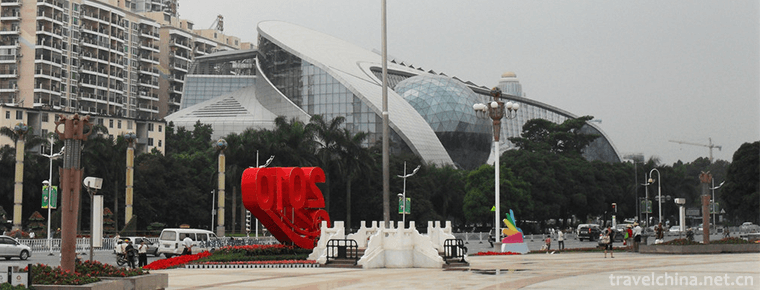
-
Ali Mountain
Mount Alishan, located 75 km east of Jiayi City, Taiwan Province, is located at an altitude of 2,216 meters. Its coordinates are 23 degrees north and 31 minutes east.
Views: 270 Time 2018-10-30 -
Martial Art
Wushu is a technology inherited from ancient military wars. Martial arts can strengthen the body and defend the enemy.
Views: 263 Time 2018-11-13 -
Beef bun on pot
Beef bun on pot/Beef frying bag is a home-cooked delicacy. It is made of beef as the main ingredient and salt as the auxiliary ingredient. Among them, the most famous and authentic is Yongcheng specia.
Views: 592 Time 2018-11-26 -
Huang Sha ancient ferry
The original eco-tourism scenic spot of Huangsha Gudu is one of the eight scenic spots of Ningxia in Ming and Qing Dynasties, including the national AAAA-level tourism scenic spot, the National Wetlan.
Views: 145 Time 2019-01-18 -
Dai brocade weaving skills
Dai brocade weaving is one of the traditional handmade brocade weaving techniques in Xishuangbanna Dai Autonomous Prefecture, Yunnan Province, and one of the national intangible cultural heritage..
Views: 155 Time 2019-04-24 -
Oroqen Folk Songs
The Oroqen nationality mainly distributes in the Oroqen Autonomous Banner, Buteha Banner of Hulunbeier League, Inner Mongolia Autonomous Region and .
Views: 220 Time 2019-04-28 -
High cavity
Gaoqiang is one of the four major tunes in Chinese opera. Gaoqiang was originally called "Yiyang Cavity" or "Yiqiang Cavity", because it originated in Yiyang, Jiangxi Province..
Views: 119 Time 2019-04-30 -
Tujia Year
Tujia Year is an important and ancient festival of Tujia people in Xiangxi Tujia and Miao Autonomous Prefecture of Hunan Province. During the thousands of years of historical development, some relativ.
Views: 163 Time 2019-06-23 -
Zhenwu mountain ancient Temple Group
Zhenwu mountain ancient Temple group is located in the urban area of Yibin City, adjacent to Cuiping mountain, with an altitude of 396 meters. It is named for Zhenwu temple on the mountain, covering an area of more than 50 mu..
Views: 225 Time 2020-10-16 -
Social security in Deyang
In 2018, there were 748000 employees participating in basic endowment insurance, 345000 in unemployment insurance, 752000 in medical insurance, 384000 in industrial injury insurance and 399000 in maternity insurance. In the whole year,.
Views: 337 Time 2020-12-14 -
Hydrology in Yibin
The water system in Yibin belongs to the external water system, with the Yangtze River as the main vein, with many rivers, high density and abundant water. Jinsha River and Minjiang River join to form the Yangtze River, which runs through the nor.
Views: 323 Time 2020-12-18
